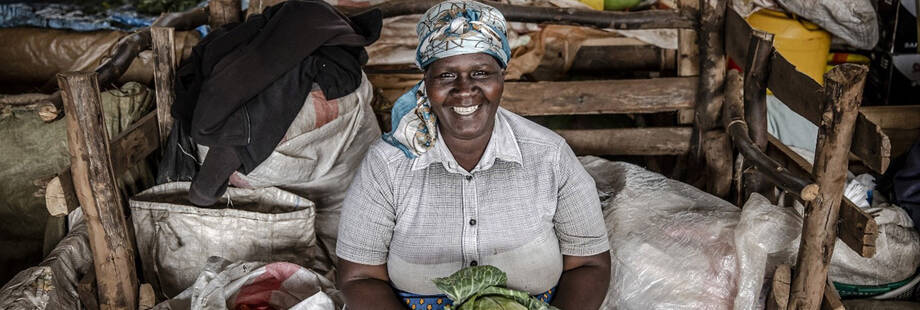Social Protection
In 2020, only 45 percent of the world's population was covered by at least one social benefit. The remaining 53.1 per cent - or as many as 4.1 billion people - were left completely unprotected (ILO, 2020). COVID-19 highlighted the essential role of social protection systems to overcome the enormous challenges posed by the global pandemic.
Enhancing social protection systems to reduce poverty and eradicate hunger.
Social protection can reduce extreme poverty and enhance food security, while also building household resilience in times of crisis, and stimulating rural household to invest in agricultural production. For FAO, social protection measures include social assistance (e.g. cash transfers), social insurance (e.g. health insurance) and labour market programmes (unemployment benefits).
FAO works with governments and partners to incorporate social protection into national rural development policies, food security and nutrition strategies, climate adaptation programmes and investment plans. FAO emphasises the critical importance of extending social protection into rural areas, and supports governments in designing, implementing and assessing systems focused on benefitting the rural poor.
Key policy messages
· Social protection is an investment, not a cost. Most countries, even the poorest, can afford social protection programmes. Well-designed and implemented social protection schemes not only generate multiple productive and social impacts, they can also boost local economic growth. FAO works to scale-up social-protection schemes, facilitating integration between social protection, food security and nutrition, disaster risk and agricultural policies. The aim is to boost the economic and productive potential of rural households and maximize the impact of social protection on rural transformation.
· Social protection programmes reduce insecurity and inequality and can help address the social and economic determinants of malnutrition. For instance, social protection can allow access to more and better food, as well as allow poor households to diversify their food consumption, often through increasing their own production.
· Social protection is also a critical component of rural poverty reduction strategies. It can directly support and improve agricultural livelihoods by alleviating credit, savings and liquidity constraints. Social assistance provides the minimum basis of income security to ensure food security and small scale livelihood activity. Social insurance reaches the vulnerable, it allows those living in rural areas to manage the inherent risks of agricultural activities. Access to adequate social protection in rural areas has implications for risk management and economic inclusion.
· Social protection also enhances the resilience capacity of rural households to reduce their vulnerability, while coping, responding to, and withstanding natural and man-made disasters, including those related to climate variability, change and conflict. Moreover, social protection can potentially address the economic barriers to allow poor households to transition to more productive and sustainable livelihoods, including climate smart practices.
· The COVID-19 pandemic and its socioeconomic impact has seriously eroded progress made over the past decades on the Millennium Development Goals and Agenda 2030 for Sustainable Development: While almost all countries expanded their social protection programmes and systems to respond to the COVID-19 crisis in unprecedented ways, the pandemic has also revealed gaps in social protection systems. In doing so, these gaps provide important pointers on how to move forward to achieve universal social protection (SPIAC-B, 2021).
· Sustaining and maximizing the role of social protection requires a comprehensive approach. Social protection is most effective, when embedded in multi-sector strategies that focus on agricultural development, food and nutrition security, natural resource management and rural poverty reduction. Evidence has shown that where Ministries, local organizations and partners work together to ensure coherence and compatibility between policies, the positive benefits from social protection are far greater.
Featured resources




Issue paper
Key COVID-19 Lessons and Recommendations for Working Towards Universal Social Protection

Issue paper

Issue paper
Extending social protection to rural populations. Perspectives for a common FAO and ILO approach



Issue paper
Protecting livelihoods – Linking agricultural insurance and social protection


